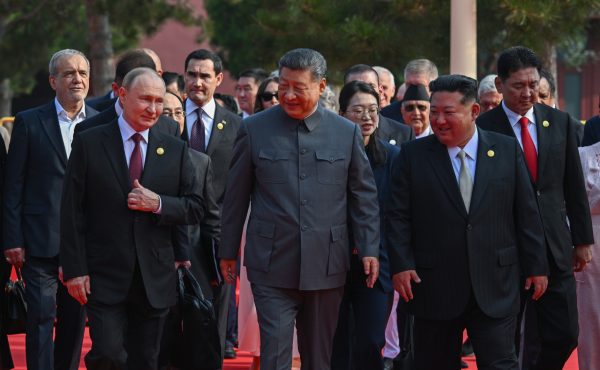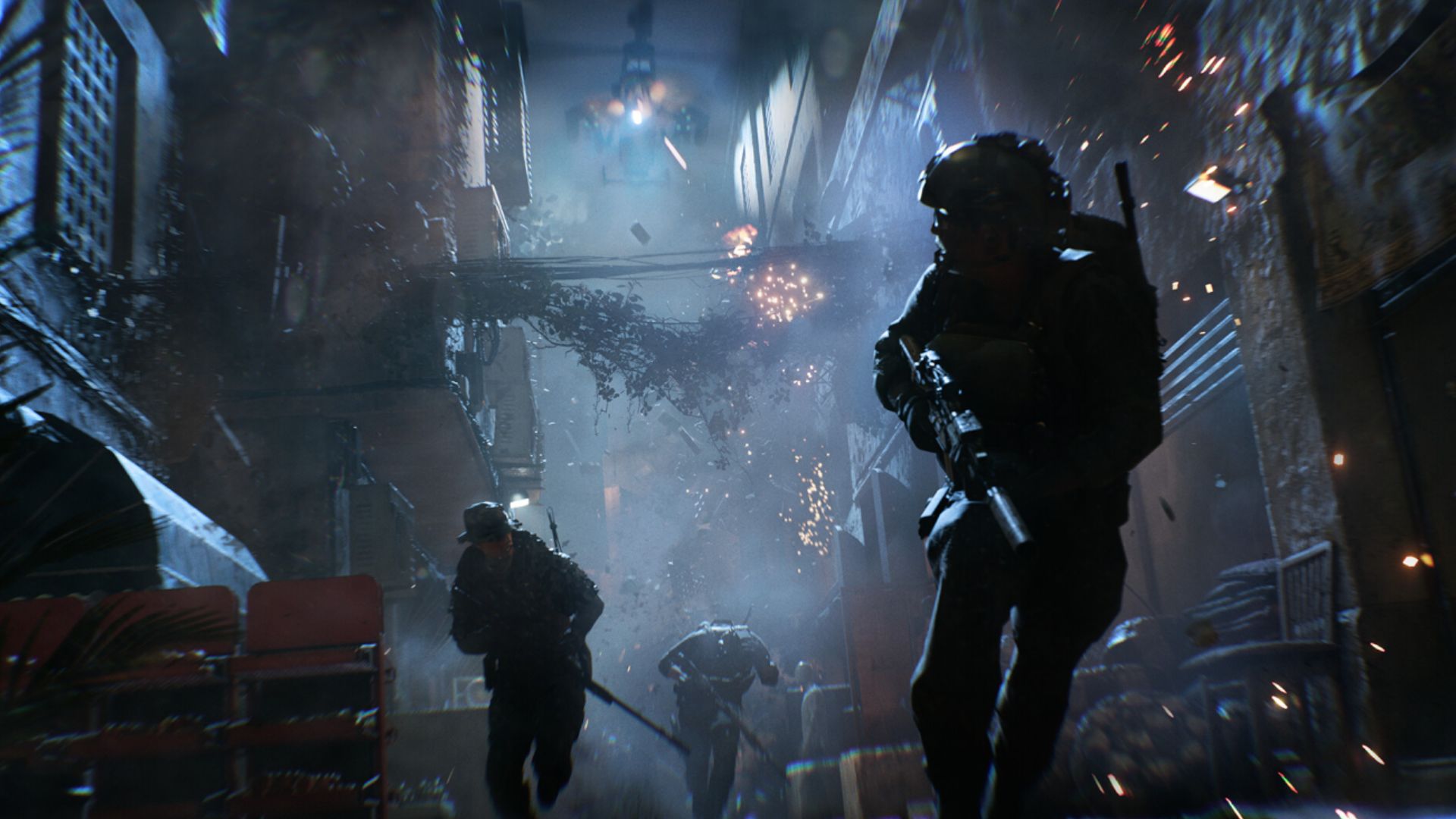By Shao Jingkai
Copyright thediplomat

In both 2015 and 2025, Chinese President Xi Jinping and his Russian counterpart Vladimir Putin attended each other’s Victory Day parades. The two leaders appeared together four times on such occasions, twice at Moscow’s Red Square (on May 9) and twice at Beijing’s Tiananmen Square (on September 3), to celebrate the 70th and the 80th anniversaries of the victory in World War II. In doing so, the two nations also emphasized their common defeated enemy: Japan. Beyond the parades, Beijing and Moscow’s deepening strategic partnership – described by some as a “quasi-alliance” – has produced a striking convergence in their World War II narratives, especially those involving Japan. Compared with 2015, China’s official history now downplays the role of the United States and other Western allies in the Anti-Japanese War (officially the “War of Resistance Against Japanese Aggression and the World Anti-Fascist War”) and instead foregrounds the Soviet Union’s contribution to Imperial Japan’s defeat along with China. Together, these reframings present contemporary China and Russia as a “league of justice” and co-founders of the postwar order (though their interpretation of that “order” is different from the U.S.-led liberal international order). While the large military parades and the accompanying narrative shifts are meant to send different signals to different audiences – for example, a show of non-Western solidarity to the U.S. and Europe amid the ongoing Russia-Ukraine war – their most immediate target is, doubtlessly, Japan. Tokyo is deeply concerned about a tighter China-Russia relationship. Its 2022 National Security Strategy, Japan’s current guiding strategic document, expressly warned that “China is strengthening its strategic ties with Russia and attempting to challenge the international order.” For Japan, the Sino-Russian alignment in wartime narratives is more than a contest over memory, it generates real geopolitical effects that transcend history. Russia Enters the “History Wars” First of all, Japan now confronts a new rival in the region’s “history wars”: Russia. Since the 1980s, disputes over Imperial Japan’s wartime atrocities – from the Nanjing Massacre to the “comfort women” controversy – have repeatedly strained Tokyo’s relations with China and South Korea. By contrast, postwar Japan-Russia ties have been shaped far more by territorial disputes, ideological differences, and geopolitical rivalry than by contested wartime memories. The situation has changed: 80 years after the war’s end, Russia now stands with China to engage in the “history wars” against Japan. In a joint statement following Xi’s visit to Moscow in May, China and Russia claimed that they “share the common responsibility and mission of upholding the correct historical view of World War II,” and the two governments pledged to “[s]upport cooperation between the archives departments of the two countries to combat all attempts to falsify history and erase the merits of the two peoples in fighting against Japanese militarism and German fascism.” Read together, those commitments amount to a pointed warning to Tokyo about Japan’s historical revisionism, a topic Russia had not generally engaged on. Their push to foster the “correct historical view” propelled Beijing and Moscow to launch various commemoration events and PR campaigns vis-à-vis Japan. In August, the Russian government declassified new documents about Unit 731 supplying new evidence of the Japanese Imperial Army’s brutal human experiments and bacterial warfare in China. Two weeks prior to the V-Day parade in Beijing, Russia also held a ceremony to commemorate the battle of Shumshu Island on August 18 – the day when the Red Army started its attack on the then Japan-held Kuril Islands 80 years ago. A new open-air memorial was also established on the island to commemorate the landing operation. These coordinated anti-Japanese narratives are meant to cement Beijing’s and Moscow’s self-image as founders and guardians of the postwar international order, casting a “revisionist” Japan as an evil “other.” Tokyo sees those narratives as instruments of diplomatic leverage and even “cognitive warfare,” and has responded by deepening its alliance with the United States, expanding security ties with other Indo-Pacific partners – notably the Philippines and Australia – and pursuing a truce in the “history wars” with South Korea under the Lee Jae-myung administration. A United Front on Territorial Disputes Intertwined with the World War II historical narratives, another dire concern for Japan is, as James Brown at Temple University Japan coined in 2015, an “anti-Japanese territorial front” forged by China and Russia. If Beijing and Moscow align their wartime narratives, they do more than rewrite history – they could consolidating a diplomatic and legal framework that would put pressure on Japan in two simultaneous territorial disputes, against China over the Diaoyu/Senkaku islands in the East China Sea and against Russia over the Southern Kurils/Northern Territories in the Sea of Okhotsk. China is now seeking to fuse its “postwar order” narrative with its sovereignty claims in the East and South China Seas – an approach that echoes Russia’s rationale in the Kuril Islands dispute, where Moscow justifies its continued occupation of the four islands Japan calls the Northern Territories. For decades, Moscow has linked the unresolved territorial dispute with the stalled peace treaty with Japan in order to pressure Tokyo into “recognizing the outcomes of World War II” – effectively weaponizing history as a negotiating tool. Former Japanese Prime Minister Abe Shinzo sought to break the deadlock during 2016-2020, with a “New Approach” that combined economic incentives and partial concessions in the Russo-Japanese territorial dispute, but the effort ultimately failed. Ironically, in the Southern Kuril Islands/Northern Territories dispute, China publicly sided with Japan in the Cold War era (starting roughly from Chairman Mao Zedong’s statement in 1964). China and Japan thus formed a de facto “anti-hegemony” alliance against the Soviet Union in the 1960s-1980s. In the post–Cold War era, however, the sea change in trilateral dynamics has produced a dramatic reversal: Beijing has moved from a pro-Japan stance to an implicit alignment with Moscow. When asked about the Southern Kuril Islands/Northern Territories issues in 2021 and 2022, Chinese Ministry of Foreign Affairs Spokesperson Zhao Lijiang replied that China believed that the “Southern Kuril Islands” (without mentioning “Northern Territories” named by Japan) was a bilateral issue and should be resolved by Russia and Japan properly. But Zhao added, “It is China’s consistent belief that the outcomes of the victory of the Anti-Fascist War should be earnestly respected and upheld.” This response clearly resonated with the “outcome of World War II” claim by Russia and revealed Beijing’s linkage of the Japan-Russia dispute with China’s post-2012 Diaoyu/Senkaku narratives. Further, their joint denial of the San Francisco Peace Treaty in 1951 (without China’s or the Soviet Union’s signatures) as the legal foundation to arrange Japan’s postwar territories also laid common ground for the two states to counter Japan’s territorial claims. Even though both China and Russia eschewed overt support to each other’s territorial claims in most disputes (such as Crimea), a de facto (if not de jure) “anti-Japanese territorial front” has already formed in 2025. Both states reasserted their narratives on the “outcomes of World War II,” underscored their mutual commitment to respect each other’s “core interests,” and framed Japan’s territorial claims as a challenge to overturn the “postwar order.” Although Beijing and Moscow eschewed formal endorsement to each other’s territorial claims (as in the case of Crimea), by 2025, a de facto “anti-Japan territorial united front” has nonetheless taken shape. Both governments now invoke “the outcomes of World War II,” emphasize mutual respect for each other’s “core interests” (a phrase understood to mean sovereignty and territorial integrity), and cast Japan’s territorial claims as an attempt to overturn the postwar order. The Impact on Today’s Flashpoints Finally, a China-Russia narrative alignment on World War II could spill over into many other geopolitical flashpoints directly linked to Japan’s national security and interests. Some examples are already evidence: increasingly frequent China-Russia military drills or joint patrols in the East and South China Seas surrounding Japan. Tokyo is also concerned about a further nuclearized and more emboldened North Korea backed by Moscow and Beijing, especially after North Korean leader Kim Jong Un stood side-by-side with Xi and Putin at the parade in Beijing. Even though it’s too early to declare the formation of a new axis, the scene may evoke a sense of déjà vu reminiscent of the Communist bloc during the Korean War. Looking farther ahead, more extreme possibilities include a “Taiwan contingency” involving Russia’s participation, or a China-Russia joint denial of Japan’s sovereignty over the Ryukyu Islands, including Okinawa Prefecture. Amid the political turbulence following Prime Minister Ishiba Shigeru’s resignation – and in the absence of a clear official statement on the 80th anniversary of World War II at home – Japan can neither shed the weight of its wartime responsibility nor exploit the “history card” to drive a wedge between China and Russia. For the post-Ishiba leadership, managing two powerful neighbors may require a serious recalibration of Japan’s diplomatic strategy – probably beginning with a cooling of the far-right historical revisionist sentiments within Japan.



